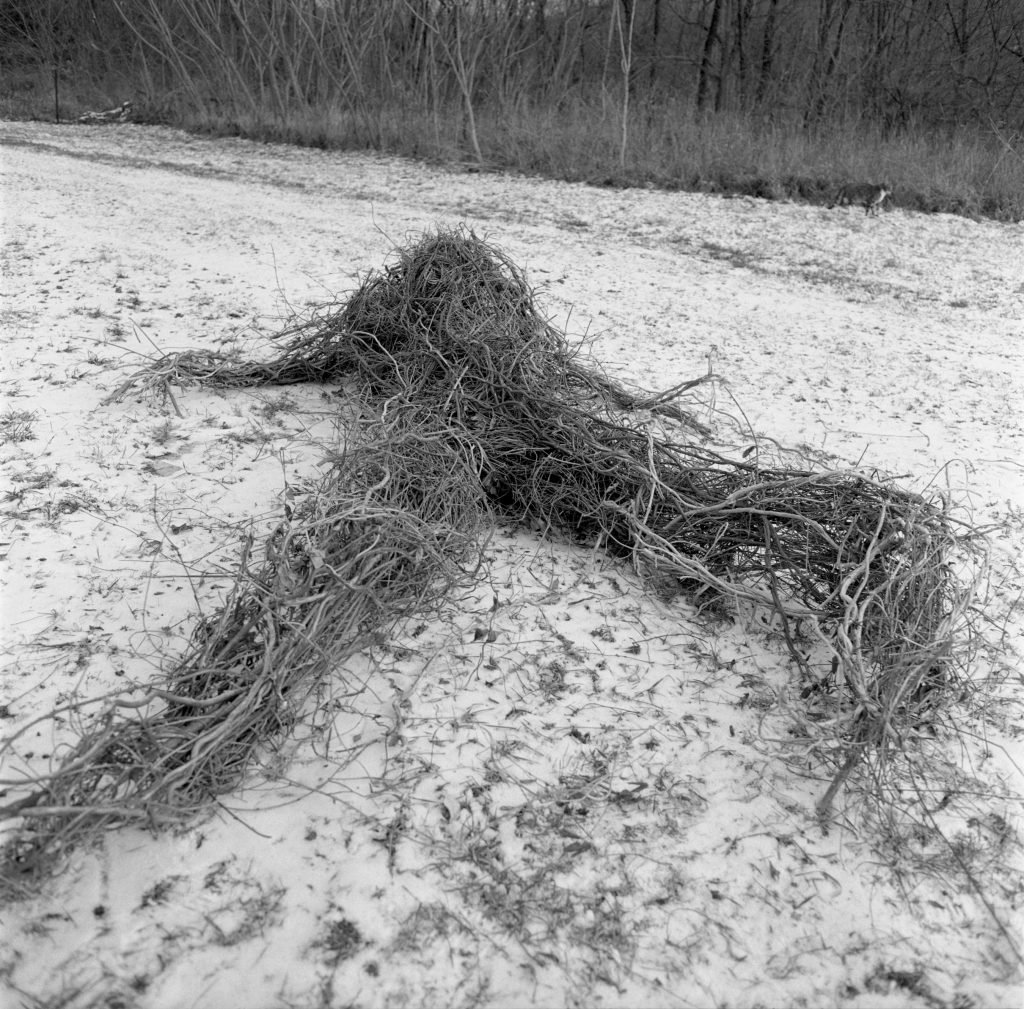
23 Dec Larry Fink’s Photos Shown with Martha Posner’s Work For the First Time
Source Credit: Content and images from Artnet News. Read the original article - https://news.artnet.com/art-world/larry-fink-martha-posner-exhibition-2588895
Larry Fink, the late photojournalist and art photographer whose work often depicted the glamour of the rich and famous, will have his photographs shown alongside the sculptures and paintings of his wife, Martha Posner, for the first time.
Fink, who died in November 2023 at the age of 82, had been in talks to have a solo show of his work at the Sarasota Art Museum. As his health continued to deteriorate, the exhibition evolved into one, guest-curated by Peter Barberie, that would put Fink’s and Posner’s work in conversation with each other.
“Larry was really hoping to be able to participate in the event itself,” Posner said in an interview. “But clearly that wasn’t going to happen. I don’t know how Peter Barberie did this. He made my work have this wonderful communication and interaction with Larry’s work that made perfect sense.”
Barberie, a Philadelphia Museum of Art curator, admitted in an essay that their art “seems utterly different,” contrasting Fink’s glossy photos of human behavior and desires to Posner’s waxy, rough and hairy sculptures.

Larry Fink, Lilith, Sculpture by Martha Posner (1993). Courtesy Larry Fink/MUUS Collection.
But Barberie wrote that Posner and Fink share “core artistic themes” including desire, vulnerability, and brutality, which were often shaped by life on their Pennsylvania farm.
Virginia Shearer, the director of the museum, said in an interview that the couple “really admired each other,” with their mutual influence highlighted by Barberie’s curation.
“Larry could get into a pond and really embed himself with a group of frogs,” Shearer said. “The beginning of the exhibition pairs those photographs with Martha’s beautiful watercolor drawings of animals and insects.”
Posner is best known for large sculptural works using raw materials, like figures made from honeysuckle retrieved from the woods around their farm in Martins Creek, Pennsylvania, on walks with her dog, Grizzly, who would carry back vines to use. She’s also used fleece from the sheep and llamas they raised, and feathers clipped from the wings of dead peacocks.
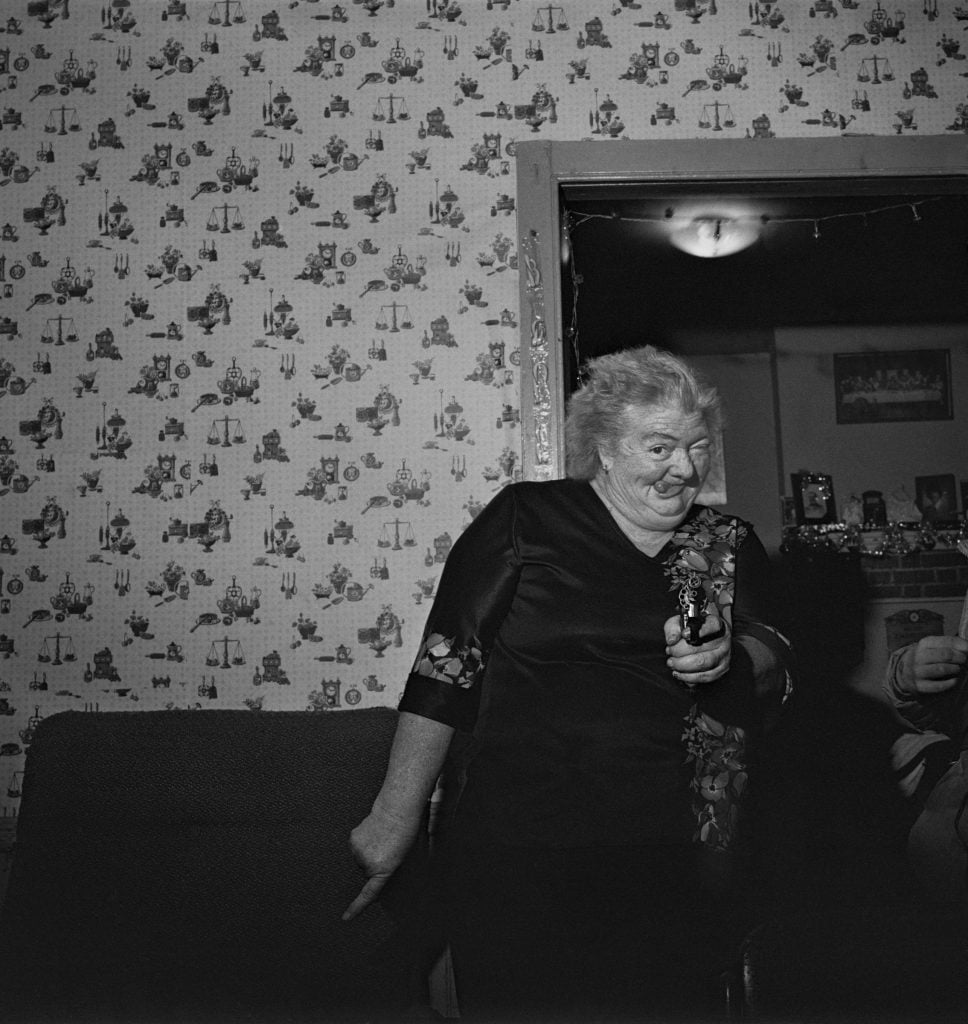
Larry Fink. A Sabatine Christmas, Martins Creek, Pennsylvania (1983). Photo courtesy of Larry Fink/MUUS Collection.
Posner said that even the way she and Fink thought about their work was quite different. Fink, primarily a photojournalist, was given assignments. His artistic work would then be inspired by the assignments he had been given. Most of it was taken on a “tiny Sony point-and-shoot camera” that he “did just about everything with.”
“It bothered Larry that I didn’t work every day,” she said. “He called me an inspirational artist, and that’s true. I work when I feel like I don’t have any other choice but to start working. I know many of my artist friends have a much better daily practice than me, but also I have this enormous property to take care of, too.”
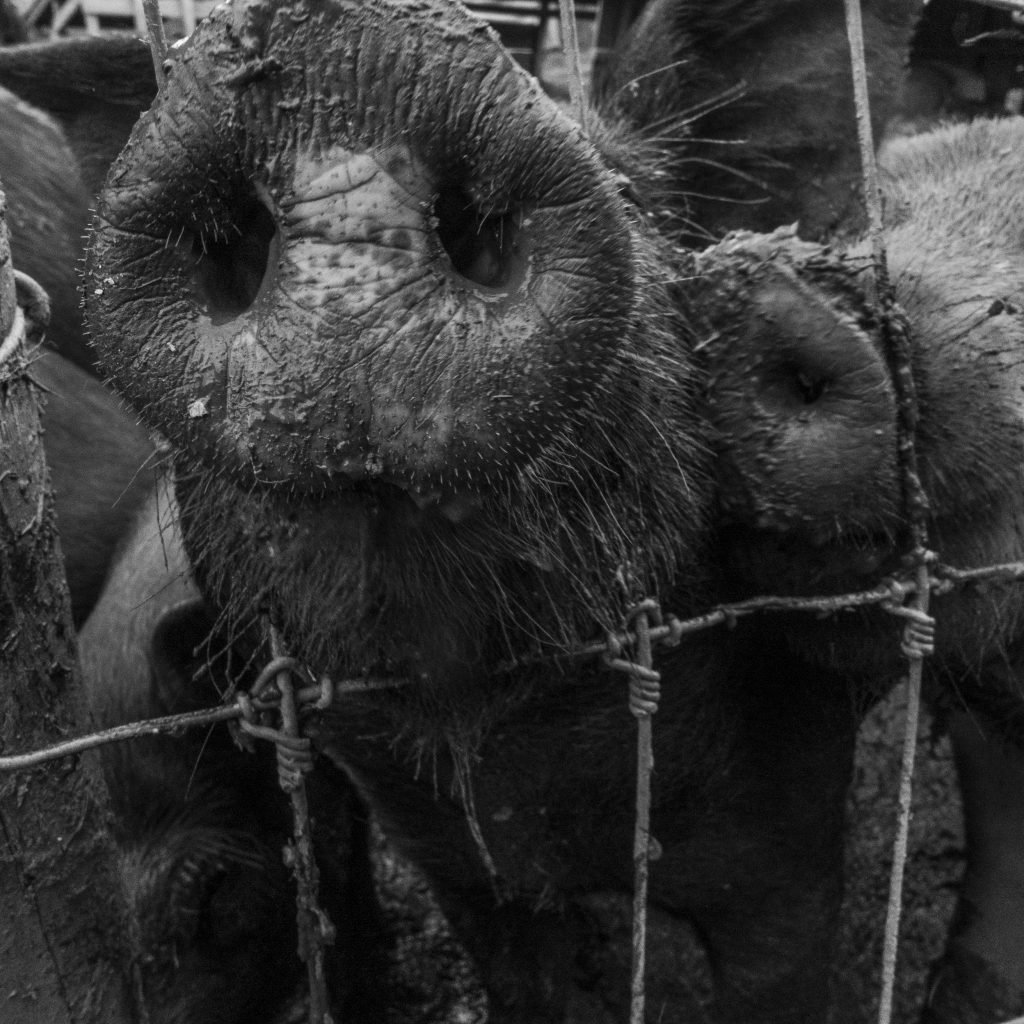
Larry Fink, Pigs at Stacia’s, Pennsylvania (2019). Courtesy Larry Fink/MUUS Collection.
The major convergence between the practices of the two artists, Shearer pointed out, is in the photographs Fink took of Posner’s work, and sometimes of her process. “There’s some fabulous photographs like one of her performing in the woods with a mask which is really very evocative of the myths and legends that come up in her work,” she said.
Posner said Fink was the only person she trusted to shoot her work because he could make her sculptures feel dynamic, true to how they look in person. “They had a presence,” she said. “I wouldn’t know who else to do it. I mean, a painting, I could ask any good photographer. But the sculptures, they became too static if anyone else photographed them.”
Posner met the already successful Fink in 1992 and joined him at his farm soon after. Fink built her a studio in their barn, and she took care of the homestead when he traveled for photo shoots.
“Larry was incredibly well-known and successful and worked for every major magazine,” Posner said. “So, he cast a big shadow. Having said that, he was always very supportive of my work. But Larry was away a lot working, and we had this farm.”
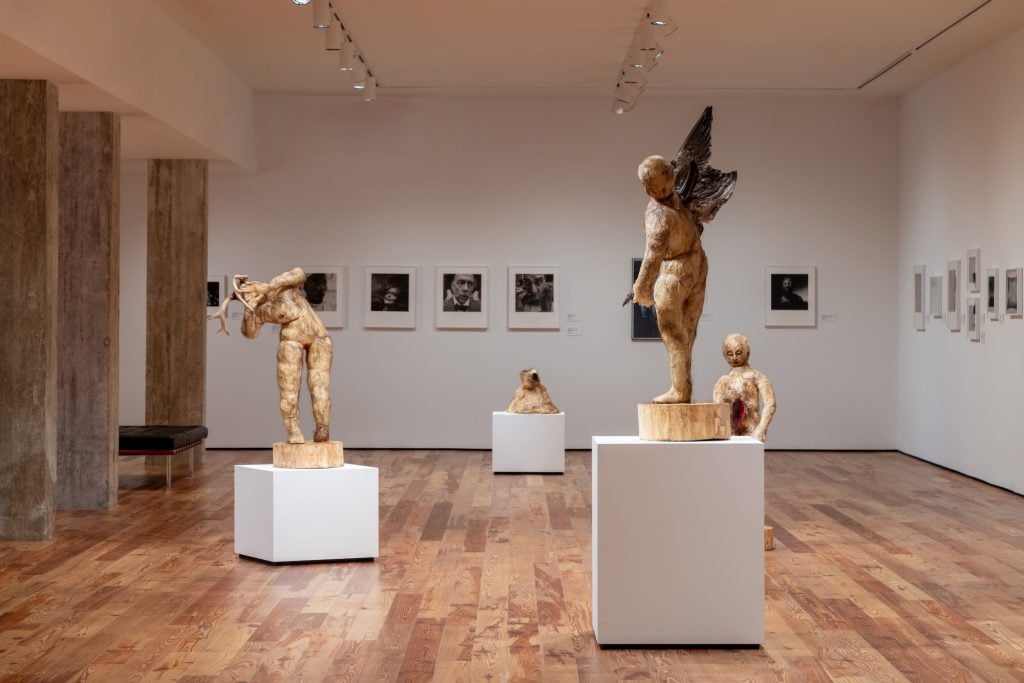
Installation view of “Larry Fink / Martha Posner: Flesh and Bone” at Sarasota Art Museum, Sarasota, Florida, 2024. Photo: Ryan Gamma.
She said they often helped each other with their work, but she didn’t see their artistic relationship until Barberie assembled the show.
“Larry could come in and talk and help if I was working on a painting or a large drawing. He could see where those things were going. His first wife is the great painter Joan Snyder, and I think that they had a firm collaborative relationship,” Posner said. “But my being a sculptor was more difficult for Larry to see.”
She recounted an instance when Fink invaded her studio and described something she was working on as a “complete disaster.”
“You are not allowed in here anymore unless you’re invited,” Posner shot back. But when he saw the piece finished, he said, “Fucking great, Posner.”
Barberie’s first instinct for Fink’s solo show, Posner said, was to have it reflect the contents of a book of the photographer’s work that they had planned to publish. But when Barberie visited Posner’s studio, the idea of the joint show struck him.
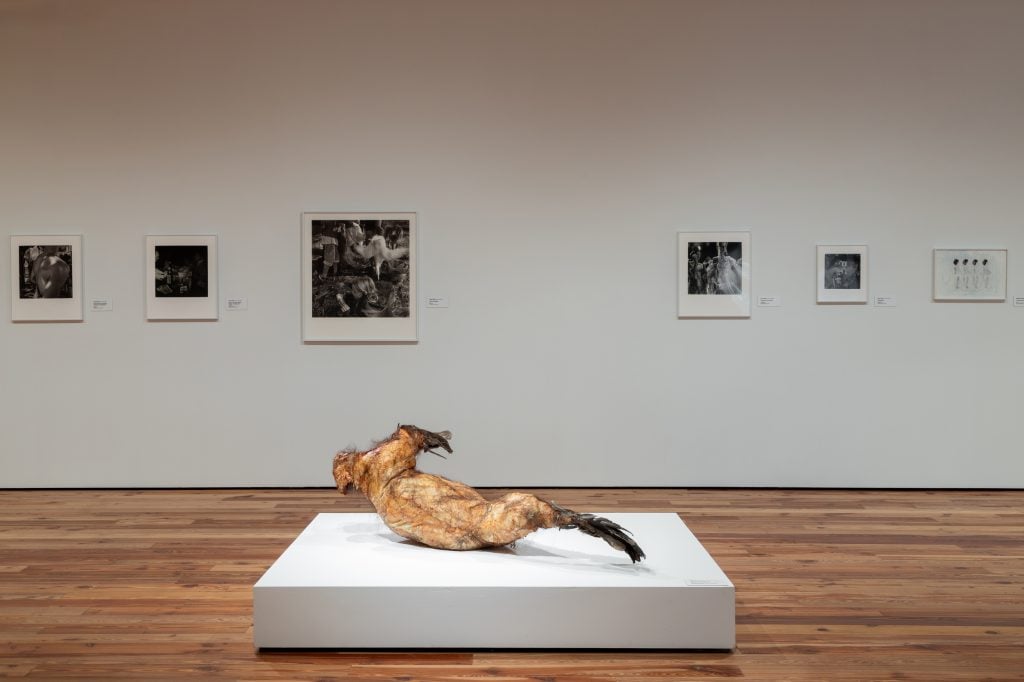
Installation view of “Larry Fink / Martha Posner: Flesh and Bone” at Sarasota Art Museum, Sarasota, Florida, 2024. Photo: Ryan Gamma.
“I was cranky [at the idea] because I had all my work wrapped up in a loft and boxed up, and my main concern, as I said, was caring for my husband,” she said. “But I schlepped up and unwrapped everything and pulled things out. But Peter’s a friend of ours. So, you know, it was very easy working with him.”
As she sorted through her work, she found pieces of hers she had forgotten about and some that had never been shown. Barberie would pick things out as she pulled them down, selecting what she described as “very personal pieces” like watercolors of animals directly from her sketchbook.
“I had no idea how it was going to work because I was so overwhelmed with Larry. And then, after Larry’s death, I was overwhelmed with everything you go through with an estate of a loved one who’s passed,” Posner added. “I just sort of released everything.”
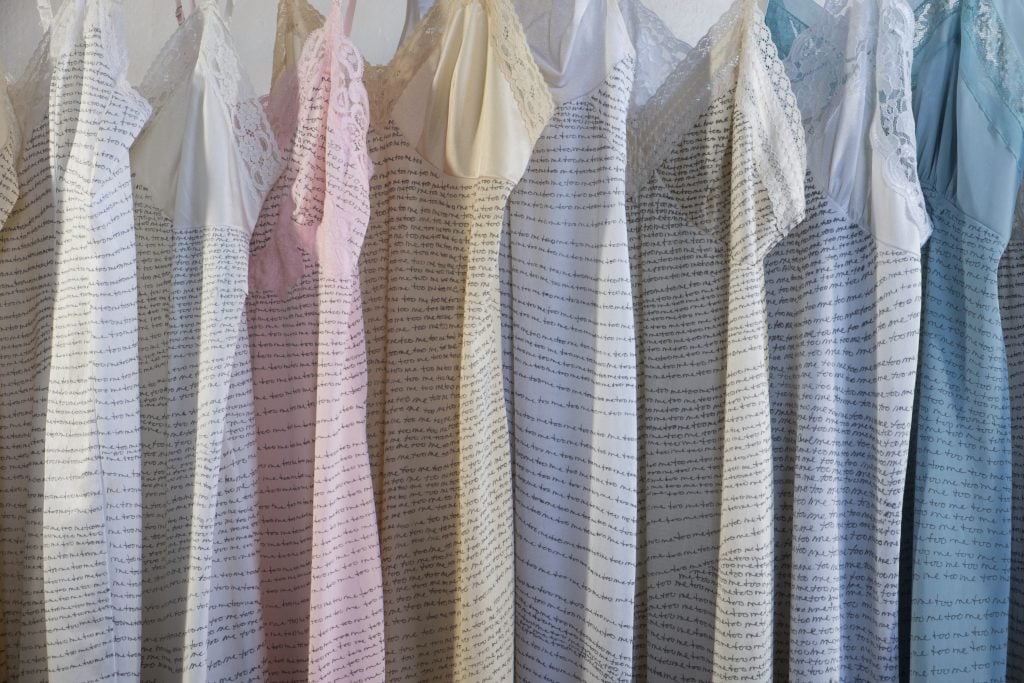
Martha Posner, #MeToo (detail) (2018). Courtesy of Martha Posner.
And the show does include new work by Fink, made during 2020 as he spent more time at the farm. Fink was shooting as recently as six months before his death, while Posner’s latest work includes 2024 watercolors, painted after her husband’s passing.
“My studio is cold now. So, I’m just doing some small pieces in the house. But come the spring, I will do some more,” Posner said. She said her next work is inspired by the writings of Natalie Haynes, whose bestselling books examine the female characters of Greek mythology and how they were depicted.
“She’s recovering the stories of women. So, I’ve been doing a bunch of small watercolors based on Greek mythology and I’m very excited about retelling these stories,” she said.
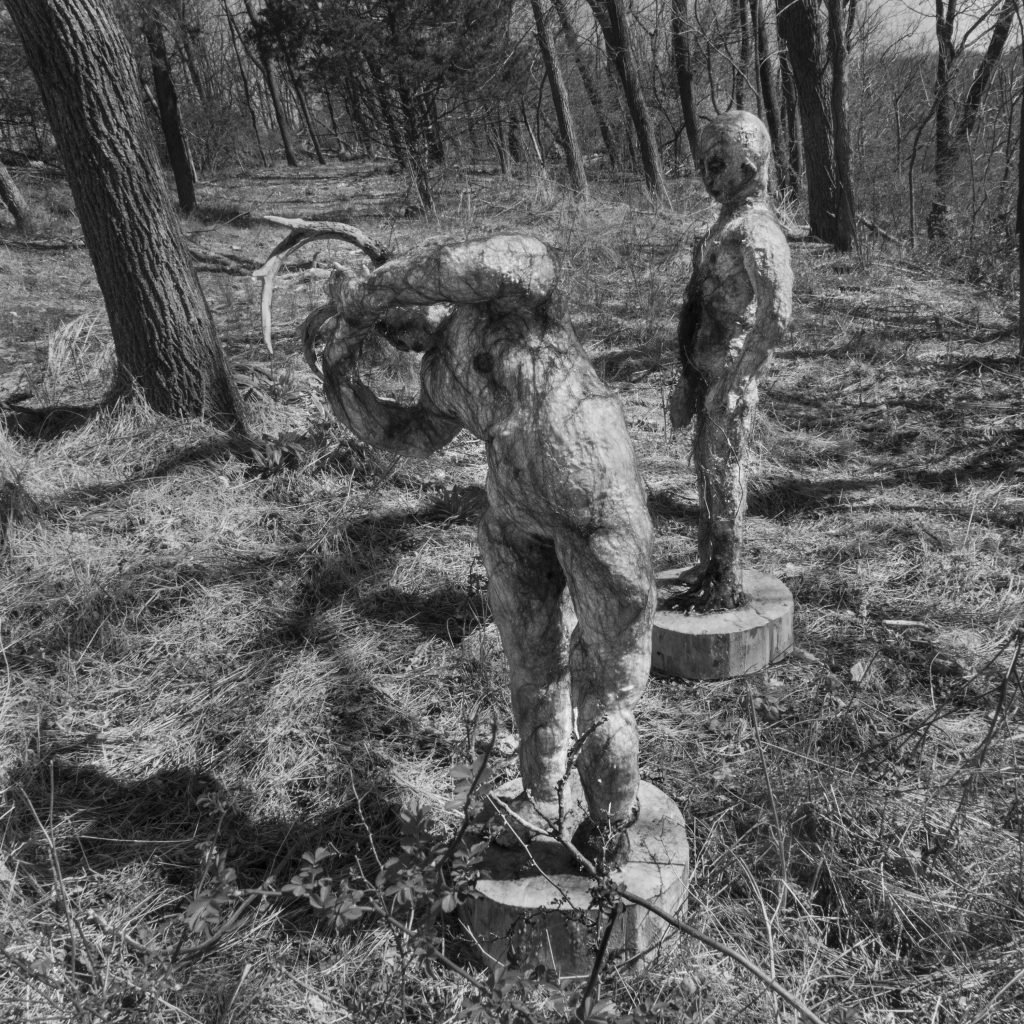
Martha Posner, Mercy (2011-2016). Photo courtesy of Martha Posner
As for her life on the farm, Posner said it remains indistinguishable from her practice.
“I don’t separate myself from this place. And, the first time I came here, I think I fell in love with this place equally to Larry,” she said. “There are gardens all over the place which I planted slowly over 30 years and it’s just very hard for me to separate what my art practice is from who I am and where I live.
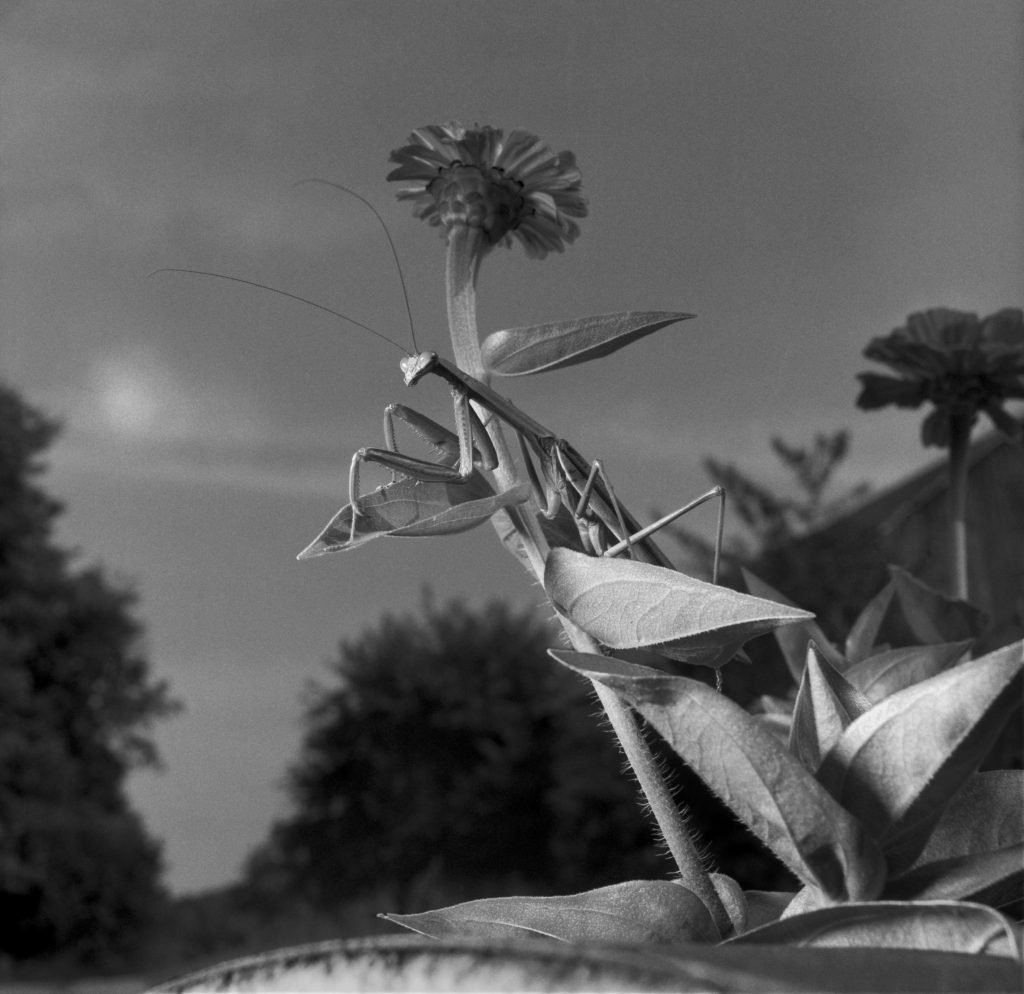
Larry Fink, Praying Mantis, Martins Creek, Pennsylvania (1978). Courtesy of Larry Fink/MUUS Collection.
“I don’t see a big difference,” she added, “between flooding a field with 500 tulips every year for the past 25 years and making something in the studio.”
“Larry Fink / Martha Posner: Flesh and Bone” is on view at the Sarasota Art Museum, 1001 South Tamiami Trail, Sarasota, Florida, through April 13, 2025.
Source Credit: Content and images from Artnet News. Read the original article - https://news.artnet.com/art-world/larry-fink-martha-posner-exhibition-2588895

